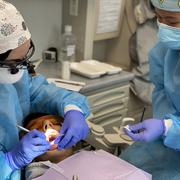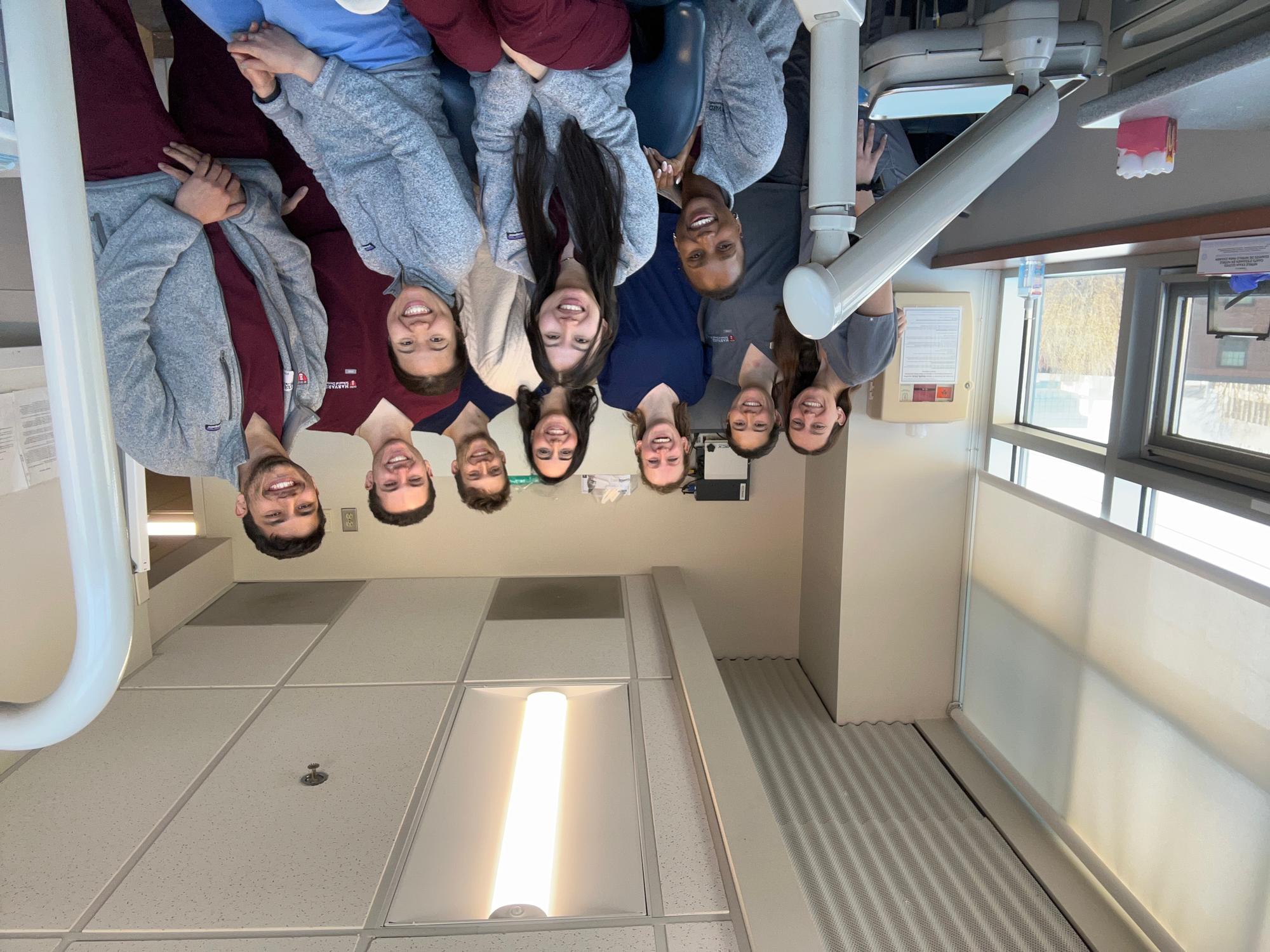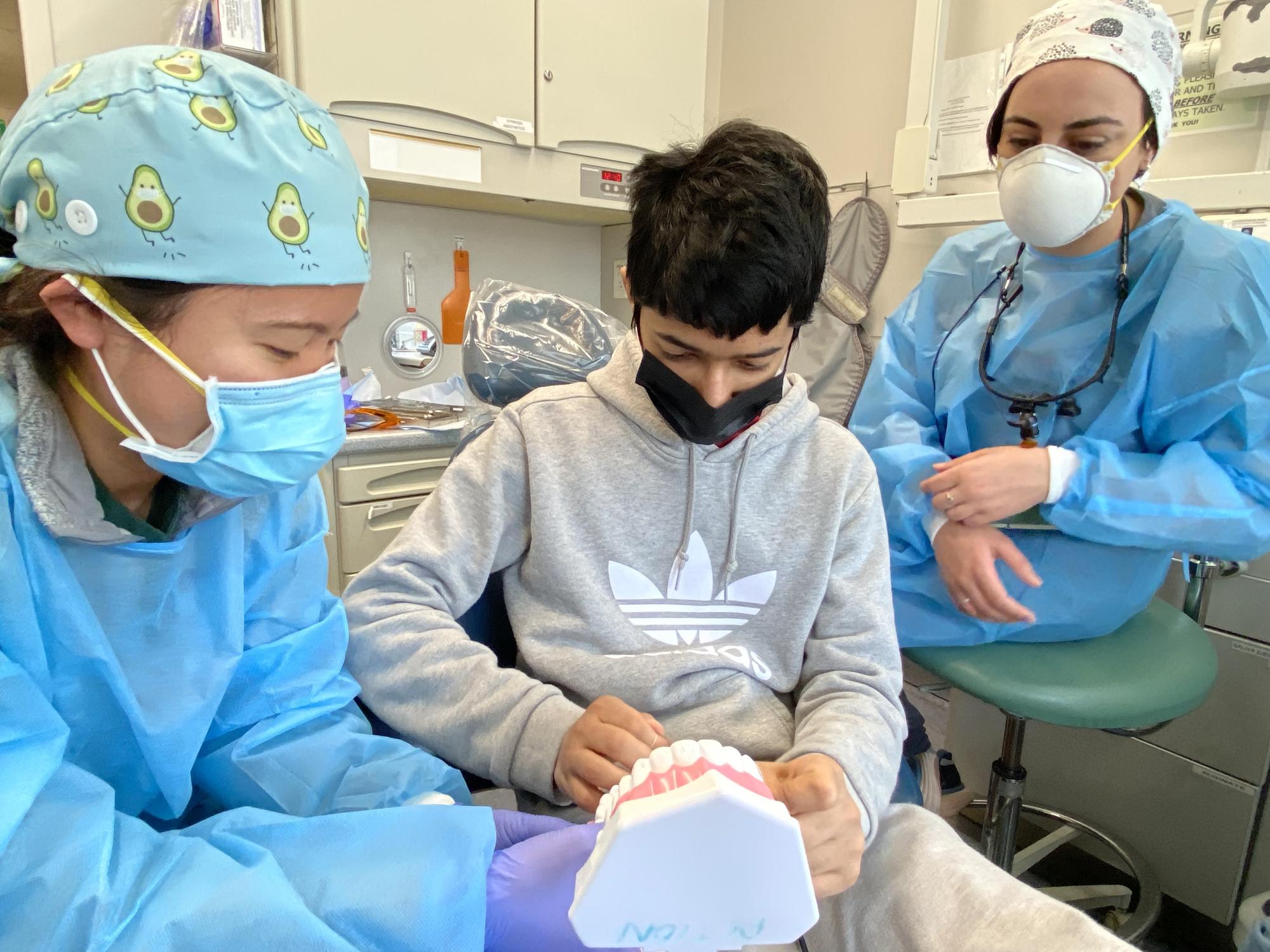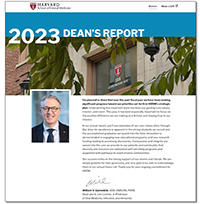
A Harvard School of Dental Medicine (HSDM) student-run pediatric dental clinic has been named a recipient of an “Access to Care Grant” from the Massachusetts Dental Society (MDS) Foundation. The grant, totaling $10,000, will support the Action for Children and Teens in Oral Health Need (ACTION) clinic that provides care to pediatric patients at the Cambridge Health Alliance (CHA) in Cambridge and the Greater Boston area.
“The MDS Access to Care Grant is providing a huge source of support for the ACTION program. With this generous funding, we can continue to expand our student-run provision of care for a vulnerable pediatric patient population,” said ACTION coordinator Betty Ben Dor, DMD25.
 The ACTION program, established in 2009 by David Okuji, lecturer on Oral Health Policy and Epidemiology, and HSDM predoctoral students, is focused on increasing awareness of and access to pediatric dental care within the community of Cambridge and neighboring towns and cities. The Windsor Street Dental Clinic (WSDC) serves as a site for ACTION, where HSDM students learn about clinical dentistry in the community while volunteering their time. Students from HSDM’s DMD program work as providers, assistants, and managers under the supervision of attending dentists, HSDM faculty members Drs. Caleb Tam, Alec Eidelman, and Jason Outlaw, during monthly Saturday clinics.
The ACTION program, established in 2009 by David Okuji, lecturer on Oral Health Policy and Epidemiology, and HSDM predoctoral students, is focused on increasing awareness of and access to pediatric dental care within the community of Cambridge and neighboring towns and cities. The Windsor Street Dental Clinic (WSDC) serves as a site for ACTION, where HSDM students learn about clinical dentistry in the community while volunteering their time. Students from HSDM’s DMD program work as providers, assistants, and managers under the supervision of attending dentists, HSDM faculty members Drs. Caleb Tam, Alec Eidelman, and Jason Outlaw, during monthly Saturday clinics.
“Working with attending dentists and staff at the Windsor Street Dental Clinic, student volunteers help facilitate care including exams, prophylaxis, restorations, and extractions for Cambridge children,” Ben Dor said. “The WSDC is the only pediatric dental clinic of its kind in the CHA system, and it fulfills a need in the community by accepting MassHealth, the public health insurance program for Massachusetts’ residents with low-to-medium incomes.”
“Cambridge Health Alliance is a safety net healthcare organization dedicated to providing comprehensive and quality health care services to all populations, nearly always at no out-of-pocket cost to the patient,” said Eidelman, lecturer on Oral Health Policy and Epidemiology. “The ACTION pediatric dental clinic serves as an established and trusted program dedicated to serving individuals and families in need of oral health care who may not have any other clinic that will accept them.”
 ACTION has continued to rapidly expand and improve access to comprehensive care, but volunteers have discovered that there is a gap in access to other important resources for patients. A new project led by Michael Friedman, DMD25, another ACTION coordinator, will begin to integrate social resources into the program’s care delivery system.
ACTION has continued to rapidly expand and improve access to comprehensive care, but volunteers have discovered that there is a gap in access to other important resources for patients. A new project led by Michael Friedman, DMD25, another ACTION coordinator, will begin to integrate social resources into the program’s care delivery system.
“We are planning to integrate the ACTION clinic with CHA Connect – a free online service that lists community programs in the area. The goal is to integrate an amazing pediatric dental clinic with the patient resources available to CHA patients,” said Friedman. “Furthermore, we plan to add additional volunteers who can help patients apply to the Supplemental Nutritional Assistance Program (SNAP).”
Once up and running, the project will train volunteers, attending dentists, and staff members to screen patients for food insecurity, housing insecurity, or transportation concerns at the clinics, and help connect patients to the correct resources that they need.
“ACTION is truly a wonderful program that represents a lot of the ideals that are taught at Harvard Medical School and HSDM about an approach to patient care,” said Ben Dor. “This program allows for an enriching duality in which we are both able to provide care to a patient population in need and it generates a terrific opportunity for dental students from all class years to increase their exposure to pediatric dentistry practices. We are grateful to MDS for allowing us to sustain our project so that we may continue correcting disparities in oral health care for the pediatric patient population.”


